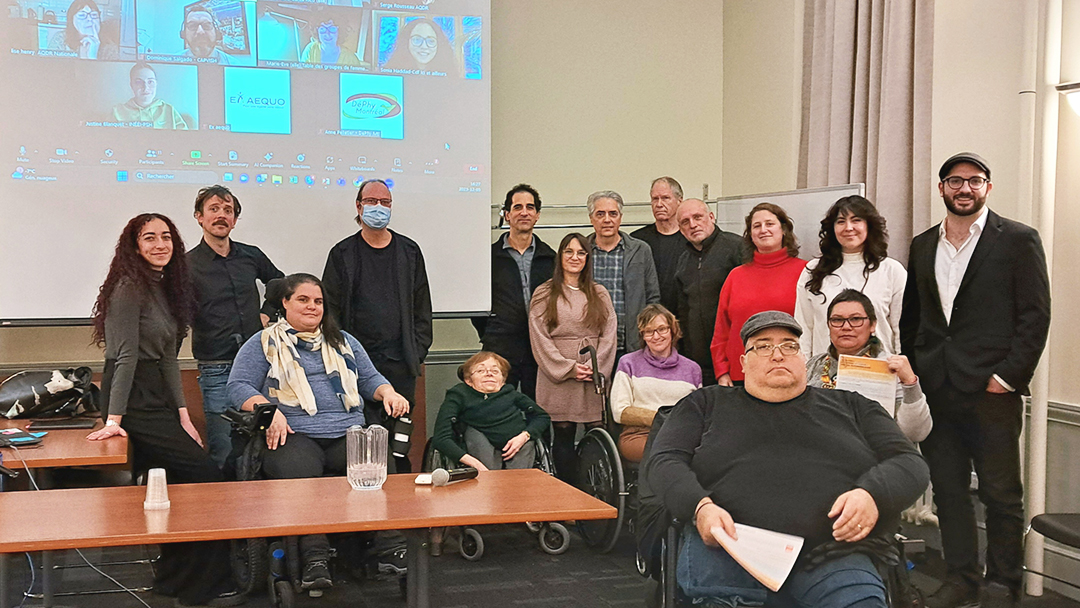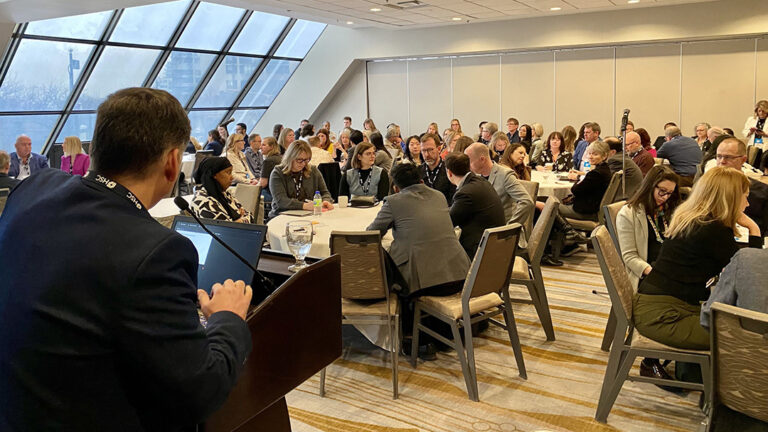Universal accessibility in the field of housing is an issue that affects many people living with physical limitations. The figures speak for themselves: over 21% of the Quebec population aged 15 and above live with functional limitations, according to the Office for Disabled Persons of Quebec. This rate is rising due to the aging of the population and temporary disabilities.
Yet only 1% of community housing units in Quebec are reserved for people with disabilities, and only large buildings are required to comply with construction requirements. Universal accessibility in the housing sector is still far from being the norm.
Mon logement accessible universellement (My universally accessible home) is a campaign launched to change that significantly. Initiated by Société Logique and supported by the Centre, the campaign has brought together partners from four regions of Quebec, including Ex aequo in Montreal, Ailia in Montérégie, Bail Mauricie in Mauricie/ Quebec Centre and Capvish in Quebec City. These organizations, all highly active in promoting accessible housing, worked together for one objective: to call on players in the housing sector, whether they operate in the public housing, community housing, or for-profit sectors, to include the principles of universal accessibility. These principles are to be respected in both new construction and in the development of funding programs for housing as well.
Universal accessibility refers to how a home is designed, built, or renovated to enable people with disabilities to live independently. It encompasses both the design and the addition of features that make a home more accessible.
The construction costs for universal accessibility: a fake problem
“It’s true that a third of the population reports having difficulty carrying out daily activities…. but 50% of the Canadian population reports having close relatives living with functional limitations… That’s what we’re seeing in the field, in qualitative terms” emphasizes Pierre-Étienne Gendron-Landry, Managing Director of Société Logique. “We need to offer housing solutions that are adapted to the needs of individuals living with limitations, as well as to the needs of their households.”
A wide range of resources relating to accessible and adaptable housing has been developed by organizations across Canada, from design principles to renovations and retrofits. The Canada Mortgage and Housing Corporation CMHC describes these factors for each of the rooms and elements of a home in a series of fact sheets, and invites to take them into account right from the design stage. Mon logement accessible universellement also argues that it would be more appropriate to respond to growing demand, right from the design stage, by building more universally accessible housing units. According to the applicant’s needs, the case-by-case adaptation is often costly and not remarkably effective for the most disadvantaged tenant households. In Quebec, while the shared areas of large apartment buildings are generally accessible, their housing units rarely are. Smaller buildings are even less accessible.
The common perception is that accessible housing is exclusively associated with the public or community sector. However, a considerable number of people could potentially access the for-profit market.
Société Logique worked on a concrete project, demonstrating the viability of building accessible housing. The project reconsidered standard floor plans for housing units in apartment buildings. The results showed that the adaptations required to make housing accessible entail only a relatively modest cost increase, ranging from a few hundred to a few thousand dollars per unit. These findings help demystify the idea that making housing accessible is financially prohibitive.
Integrating the universal accessibility perspective in Quebec and Canada
Under the Quebec construction code, many projects are exempt from barrier-free design requirements and standards. Buildings with fewer than eight units and less than four storeys, which make up most of the construction in Quebec, do not have to meet these requirements. Some municipalities, however, such as Laval and Longueuil, have gone beyond the building code, adopting stricter regulations. The idea is to push regulation to have more single-storey buildings and dwellings be accessible from the first floor of large buildings.
Some municipalities in other Canadian provinces have amended their urban planning bylaws to impose strict accessibility criteria on all new construction. Vancouver, for example, has introduced an amendment requiring all new construction to increase the incorporation of accessible or barrier-free units.
The work carried out in the various stages of the campaign has incorporated analysis of similar initiatives in various regions. For those involved in this mobilization, creating concrete solutions for universal accessibility is a perspective that can be realistically integrated into our daily practices and in all areas of the housing sector.

Amid concerns about the housing crisis, doubts may arise as to whether the issue of universal accessibility should be addressed at all. In response to these doubts, Mr. Gendron-Landry points out that integrating the perspective of universal accessibility is crucial precisely because of this crisis. “It is vital to take into account the diversity of abilities when developing solutions, whether at the level of public policy or within community organizations,” he said.
The community housing sector has long spearheaded social inclusion, pioneering the integration of universal accessibility standards. However, with growing demand and persistent challenges, it has become clear that it alone cannot meet all needs, especially since its housing stock has shrunk over the years. Yet our sector continues to extend accessibility standards beyond our own buildings, knowing that large-scale collaborations are needed to create inclusive, accessible environments for all.



